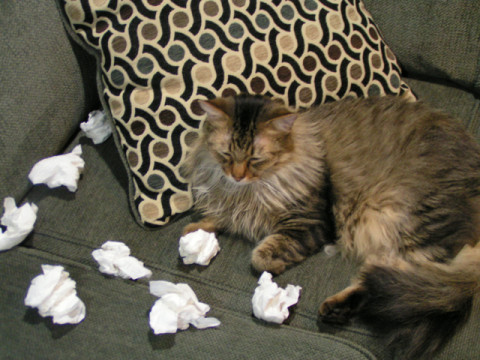Cats can suffer from respiratory infections just like we can. Many times, a respiratory infection in a cat is caused by feline calicivirus, which is potentially serious if left untreated. In addition to your cat’s chest, calicivirus can attack his mouth, his intestines and his musculoskeletal system. It’s important to be aware of signs that your cat is not feeling well, and take him to the vet.
Symptoms of feline calicivirus
What are some of the symptoms of feline calicivirus? According to PetMD, common symptoms are:
- Fever
- Loss of appetite
- Eye discharge
- Nasal discharge
- Tongue ulcers, and ulcers on the lips, hard palate, tip of the nose, and even claws
- Arthritis
- Lameness
- Bleeding
- Pneumonia, and difficulty breathing
How is feline calicivirus transmitted?
Feline calicivirus is spread through cat-to-cat contact, oftentimes in a shelter or a boarding facility. If your cat is an indoor-outdoor, or outdoor-only, cat, and has this infection, it’s possible that he came into contact with an infected cat on the street.
According to VCA Animal Hospitals, there are over 40 strains of feline calicivirus worldwide, and they affect both domestic cats and exotic cats. That means that the wildcat sanctuaries around the country, and big cats in the wild, are vulnerable, too.
Feline calicivirus presents differently in different cats. This generally depends on which strain your cat has. Symptoms can take anywhere from two to six days after infection to appear, and then cats are contagious during the entire course of the virus, which might last anywhere from 14-21 days.
Vets can diagnose feline calicivirus based on the cat’s symptoms, especially if he has ulcers. Oftentimes, treatment is for symptoms only, at home, and the cat requires no hospitalization, as long as the virus remains uncomplicated. If there are complications, your vet will recommend further treatment.
If you notice your cat’s behavior is out of the ordinary, or he’s showing any of the symptoms above, call your vet and make an appointment. Don’t try to diagnose it yourself, or through the web. Your vet is your cat’s best bet for a full recovery.




